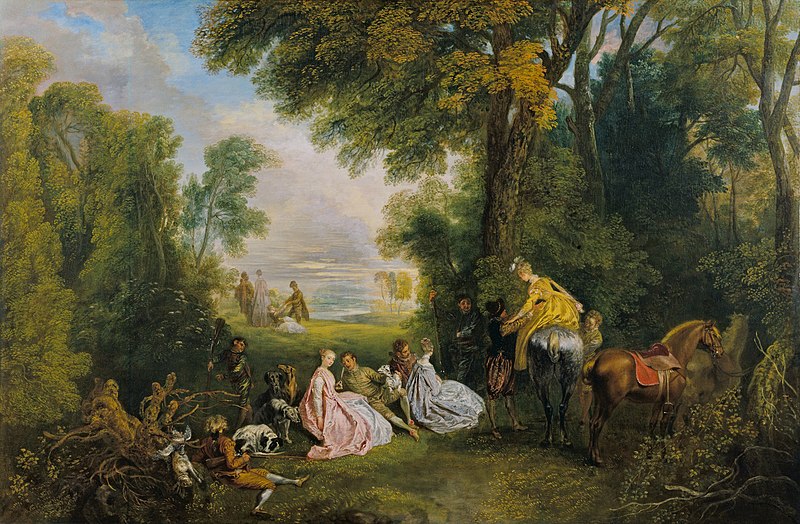Watteau’s Rendez-vous de chasse illustrates a common activity among hunters, especially aristocrats who stopped about midday for a luncheon. The pause was called a tryst (a meeting at predetermined location), where their wives or mistresses met the hunters. Dining was relatively informal, though it was served by staff. Watteau strictly observes the French usage of pique-nique, meaning to share dining costs and foods indoors.
What is served is unimportant to Watteau. It’s the socializing that matters. A century later, Jean-Anthelme Brillat-Savarin, a passionate hunter, described a traditional halte de chasse or midday tryst for luncheon as a most festive meal. He wrote that it is an émanation du ciel (emanation of heaven) that gives the meal une vivacité inconnue dans les enclos (closed rooms), however well-decorated.
*Sophia Coppola alludes to Watteau’s Rendez-vous in the film Marie Antoinette (2006) discussed in Picnicsonfilm.org.
Featured Image: Rendez-vous de chasse. The Wallace Collection, London
See Jean-Antoine Watteau. Rendez-vous de chasse or The Halt during the Chase (1717-1718), oil on canvas. The Wallace Collection, London
http://wallacelive.wallacecollection.org/eMuseumPlus?service=ExternalInterface&module=collection&objectId=65350; Jean-Anthelme Brillat-Savarin’s The Physiology of Taste, or Meditations on Transcendental Gastronomy. Paris: Chez A. Sautelet et Cie, 1826; The Physiology of Taste, or Meditations on Transcendental Gastronomy. Edited and Translated by Fayette Robinson. Philadelphia: Lindsay and Blakiston, 1854; The Physiology of Taste, or Meditations on Transcendental Gastronomy. Edited and Translated by M.F.K. Fisher. New York: Harcourt Brace Jovanovich, 1978; The Physiology of Taste, or Meditations on Transcendental Gastronomy (1825). Edited and Translated by Anne Drayton. New York: Penguin, 1978

